A week or two ago a small company from Utah launched a new swim goggle on Kickstarter that’s aimed at openwater swimmers trying to swim straight. As anyone whose done an openwater swim will tell you that can sometimes be tricky, especially in rougher waters.
The goggles will automatically provide you with left/right directions based on a GPS receiver, and will keep you going in a straight line. There are a few modes it can operate in, but I’ll get into that a bit later.
I reached out to them to see if they had a unit I’d be able to poke at. They were able to send over a prototype unit for me to go out for a test swim with to get a feel for things. As my general policy is – I won’t put together full posts on Kickstarter (or any other crowd-funded) projects unless I’ve got a device in hand. There’s simply too many projects these days that are full of marketing garbage and unrealistic timelines, so this is my way of separating those that are rooted in reality versus rainbow-farting pony dust.
So with that intro, let’s dive into it…literally.
Unpacking the unit:
Like most prototype products I receive, the IOLITE looks a bit DIY. Which, is completely normal. They are often built in quick prototyping labs with 3D printed elements and oversized electronics that aren’t designed for heavy use – but more proving a concept. Adding water to that is generally frowned upon. My point being, ignore the fact that the logo is written in a Sharpie and that tape holds it all together. Trust me, I’ve received prototype items with less waterproofing hardiness from the likes of Garmin and Polar in the past. So that’s completely normal.
To that end, there’s basically three pieces involved:
1) The goggles with the LED display
2) The GPS receiver and controller
3) A small USB adapter for downloading to your computer
The main pod is really the heart of the operation. It contains the batteries and GPS receiver, along with the electronics required to both track and store your swim data, but also tell the goggles what lights to display.
Along the bottom there are two buttons. One is for powering on, and the other for ending a swim. I suspect longer term the buttons will perform other operations. There’s also a button on the side for rebooting and resetting the unit.
Meanwhile, the goggles have a small LED board mid-way on the lens. From the front it looks a bit rough, but again, that’s the nature of prototyping. It connects via what looks like a headphone cable to the main pod.
Flipping it around you can see the LED light bar, which is attached to the exterior of the goggle (so, in theory, it could be applied to really any goggle).
With the hardware basics out of the way, let’s talk about how you actually use it while swimming.
Use while swimming:
When the unit first powers on it’ll find GPS. In general this takes less than 30 seconds, and it was fairly quick for me. The light bar above shows the full set of LED’s that are contained on the unit. In general, you’ll never see all five LED’s during normal swimming operation.
The pod goes under your swim cap in the back, and is connected via a small wire. Obviously in final production runs this would be much cleaner – but for now it’s simple enough:
To start you’ll press the #1 button, which then begins tracking of your swim. Just like every other GPS device on the market, it’ll record that data for later analysis.
Now the IOLITE has two basic modes. The first mode allows you to swim freely, and it’ll keep you going in a straight line. Whereas the second mode allows you to pre-plot out a course and follow it.
For my testing, only the first mode was enabled. The way this mode works is that you start swimming in the direction of your next turn point (be it a buoy, a marker, or simply a building or imaginary spot on the horizon). It’ll track the first 10 meters and once it has established that you’re going in any direction for 10-meters, that’ll become the direction to keep you going on. Obviously, this assumes you can swim 10-meters in the same direction.
Once you’ve done that you’ll see a single green LED light on the display. That makes life is good and you’re going straight.
If you start to shift directions a bit you’ll get a yellow light displayed. In the below case you see a yellow light to the right side of the green light. This tells me that I’ve gone to the right of the track and that I need to correct back a bit.
If I continue to go that way, I get the dreaded red light. This tells me that I’m completely incapable of following directions and should really pay attention. Or, said differently: Things are getting dire.
Once I make the correction and get back on track it’ll go back to green. If I over-correct, then it’ll simply get me going back the other way.
Now, anytime I’m trying to show wearable eye-focused technology it’s a bit difficult to represent what you actually see. That’s because many of these systems are designed to be in your peripheral vision, and thus what I’m showing you here is a few too many inches away.
So underwater what happens is you see in your peripheral vision the green/yellow/red lights and the direction – but they don’t require you change focus, nor do they actually block your view.
In my testing I swam in a big triangle picking three district points and only using the LED lights to change direction. In doing so it was actually kinda interesting because the section of the river I was on had a slight bend in it, so even though I slowly crept away from the rivers edge, I was actually going straight (as you’ll see in the next section).
In my case, I did sight occasionally – but not to change directions. Rather, to ensure a boat didn’t run me over (thankfully, none came by). I was impressed by how easy it was to get used to the LED’s.
When it comes time to change directions you simply change directions to a new point. Because it’s sudden and distinct the unit picks it up as a purposeful change versus an accidental drift. Once you do that after 10m it sets its course and calls it good.
Now there is a secondary option, which is to use the software to draw a course on a map that you’d like to follow. This option is more useful for crossings or other long distance swims that aren’t on a marked course. The reason being that trying to use such markings on a course like an Ironman race would depend on your dots and the buoys actually being in the same place on race day (which is highly unlikely).
Still, for those doing multiple openwater swims across channels, or between distinct and well known points, it’s ideal.
Looking at data afterwards:
Once back from your swim you can use the included software to evaluate your swim session. The unit can hold multiple swims, so it’s just a matter of ensuring you save at the end of your swim (really just like any other GPS device).
Once that’s done the file will open up overlaid on a map. You can of course change it from satellite to regular map or anything else. What’s cool here though is that with a tool like GPS Visualizer it’ll actually show you what LED lights were being displayed at each and every point along the way. Thus, allowing you to see where you ignored things:
This is shown in a little key, with the different color tracks:
When it’s green, it means I was swimming straight. When it’s any other color it means I was making corrections. You can see how it generally will go from green to yellow to red (if off course to the left). Or from green to blue to purple (if off course to the right).
In my case, I was sometimes purposefully swimming a bit off-course to see if it would correct and how well it would do in getting me back on track. For example, look at this little section below (swimming from right to left). In this case I was mostly on track until I made a turn to the left. It warned me first with a less-critical alert, and then it went all critical on me. I then corrected slightly (the mid-point of the the turn), and then it got upset as I overcorrected, ultimately requiring me to re-correct again.
The folks behind the unit said that you do need to be a bit careful the first few times swimming that you don’t immediately overcorrect too much with the first yellow warning light, and that you shouldn’t be making major changes till you hit the red warning lights. Still, I found it pretty easy to follow along.
Initial Thoughts:
From a pure technology perspective the IOLITE worked very well for a prototype device. The actual execution of directions and keeping me on course was spot-on, and it was quite easy to use in the water with zero learning curve. I’ve got no complaints there.
Obviously, from a hardware standpoint it’s too early to tell if there are any flaws there – since it’s all prototype hardware. My only concern I’d have would be ensuring that it’s easy to tell the state of recording of the unit itself. This is an issue that the FINIS Hydro Tracker suffers from, in that it’s very difficult to know whether it’s actually doing something (and what that something is). A clear set of LED’s with labels (i.e. ON, RECORDING, OFF, etc…) would be key. (Note: The Hydro Tracker doesn’t provide any guidance, it’s just a GPS on top of your head)
Now, I don’t actually think this product is meant to replace sighting. For example – in a triathlon there are many more factors involved. Namely, lots of people. So you’re sighting more often for reasons other than directions. I just don’t see this as a case of getting rid of sighting – but rather ensuring that you’re going the right direction. For example, having swam at a particularly rough (heaving seas) 70.3 a few years ago – I’m sure many people (including mine) lost time on attempting to go in a straight line when you couldn’t actually see the buoys. Or, the second swim I did in Saint Malo where between the swells I couldn’t actually see where I was going.
But, to that end, I don’t actually view this as really a device for most triathletes. Rather, it’s likely more for pure openwater swimmers who are doing multi-mile (or multi-kilometer) swims and want to ensure they’re going the right direction.
The only challenge to all of this though is that as the unit is priced right now (even for the early birds) is that I feel it’s just too high a barrier to entry for most people who are taking part in that segment of the sport. After all, this isn’t cycling were people are dropping thousands to save a gram or two. They believe that if they can get through Kickstarter they’ll be able to reduce the cost a fair bit and likely go at costs lower than today. Of course, that’s some of the ‘sport’ of Kickstarter in bringing new products to market. Do remember that the way Kickstarter works is that unless they reach their funding goal, none of the money is given to them (returned to backers). At present they have only about 8 days to reach that goal.
With that – thanks for reading, and feel free to drop any questions below.
FOUND THIS POST USEFUL? SUPPORT THE SITE!
Hopefully, you found this post useful. The website is really a labor of love, so please consider becoming a DC RAINMAKER Supporter. This gets you an ad-free experience, and access to our (mostly) bi-monthly behind-the-scenes video series of “Shed Talkin’”.
Support DCRainMaker - Shop on Amazon
Otherwise, perhaps consider using the below link if shopping on Amazon. As an Amazon Associate, I earn from qualifying purchases. It doesn’t cost you anything extra, but your purchases help support this website a lot. It could simply be buying toilet paper, or this pizza oven we use and love.

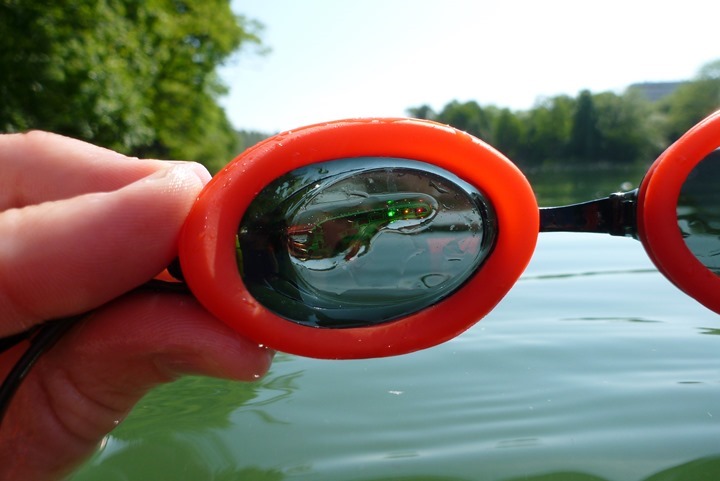
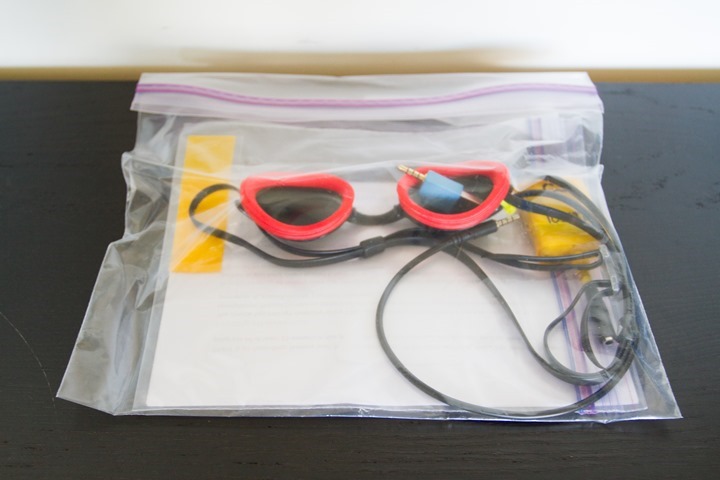
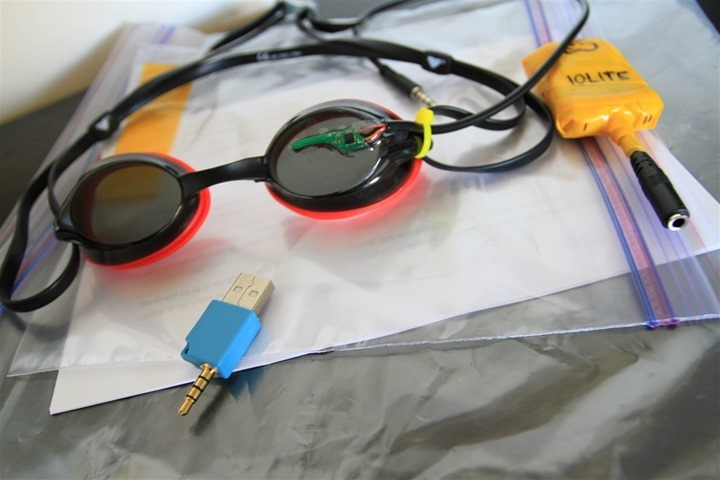
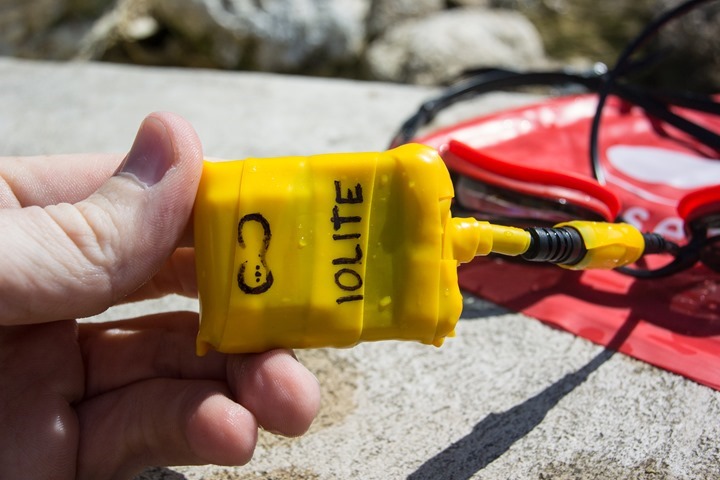
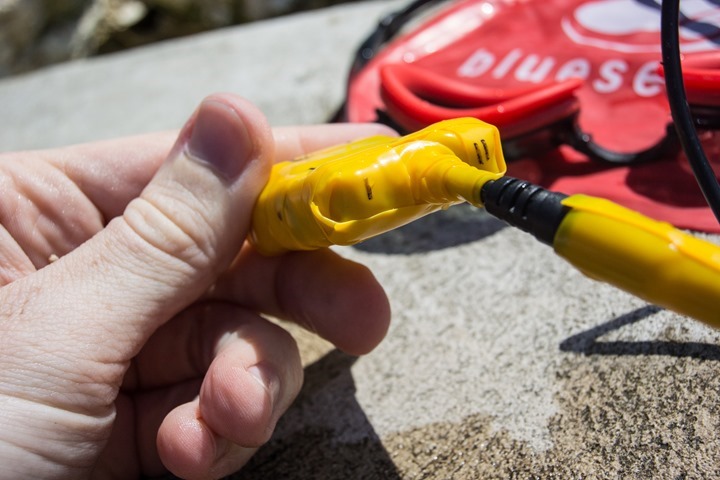
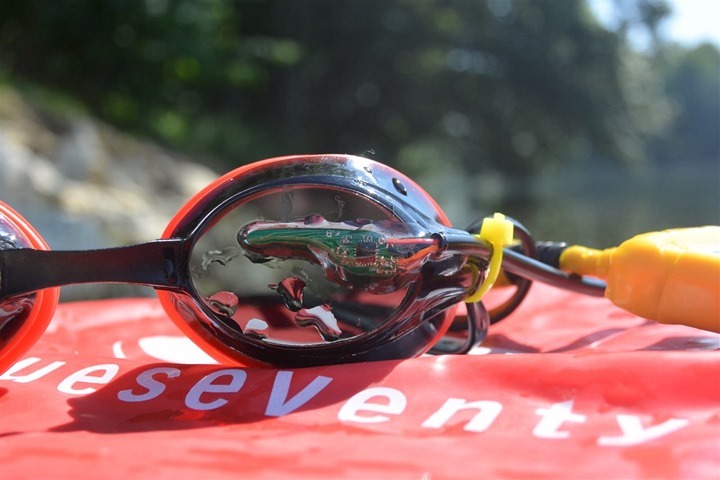
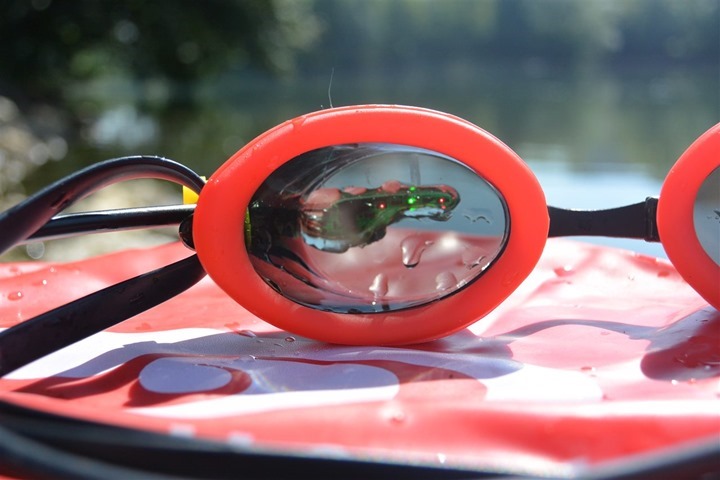
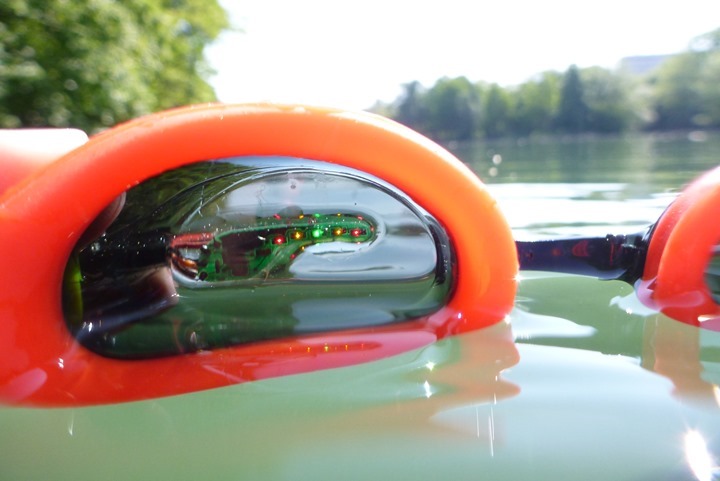
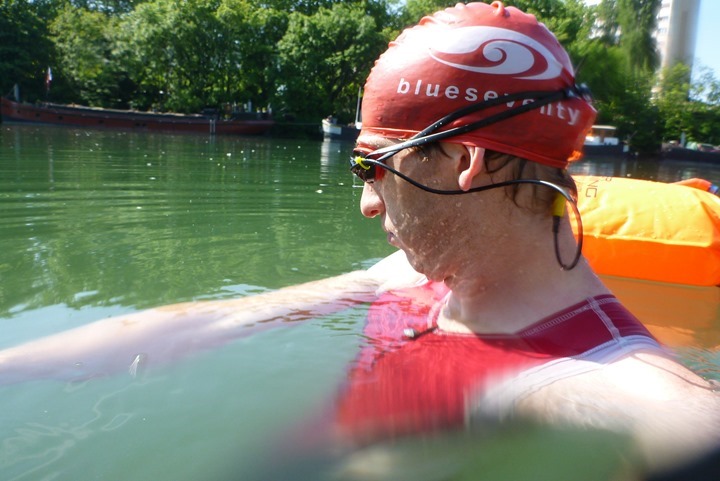
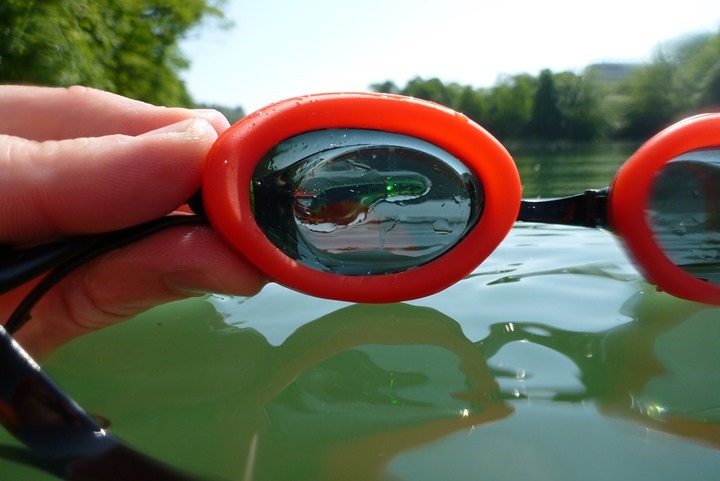
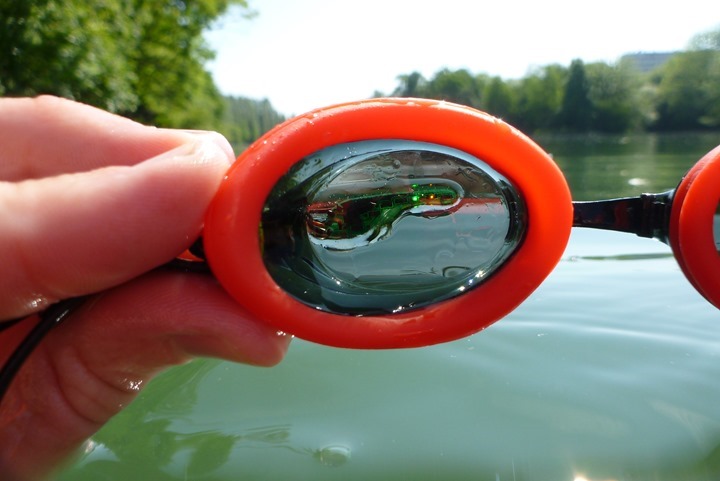
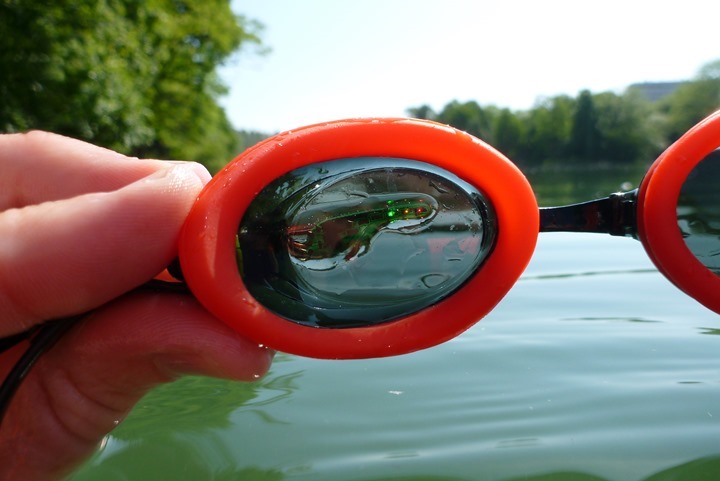
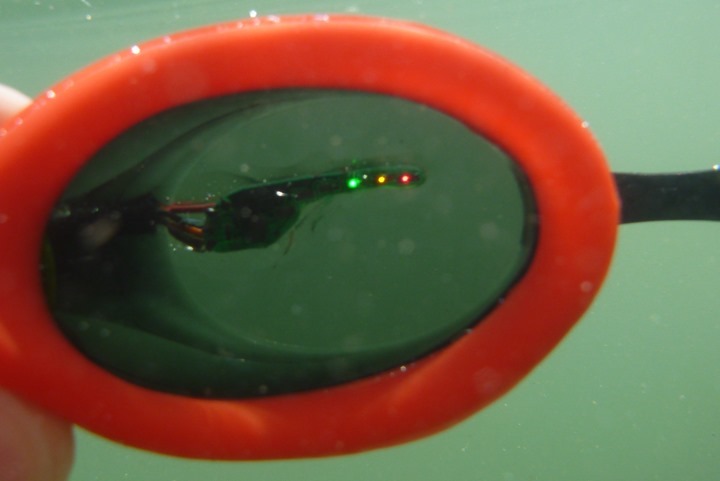
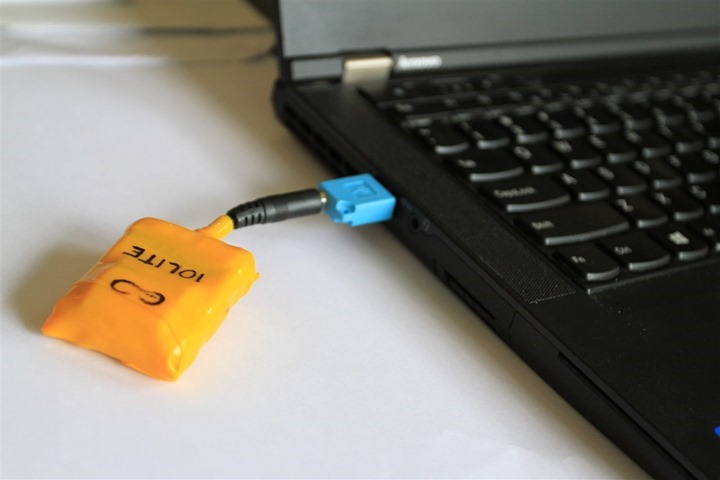



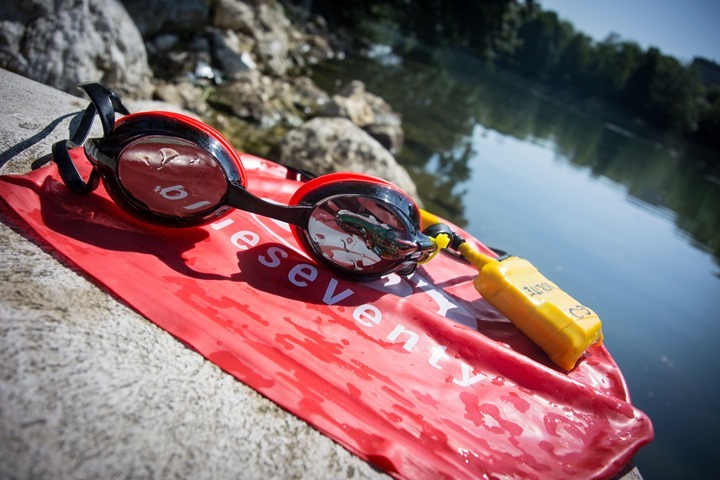
















Very interesting to see a prototype gadget. I actually quite like the DIY look.
Good on IOLITE for sharing and thanks Ray for the early look at this one.
Pretty sweet. Would definitely be interested in a product like this.
i can so see this as the future of escape from alcatraz!
There’s only eight days left, and about $50K left to raise. Join me as a backer if you want this product to become a reality.
I disagree Ray, as I would use this in a triathlon for the simple reason that I can’t swim in a straight line without that blue/black line below me. No matter how often I sight. Talking to others over the years, I know I am not in the minority. It does however add “one more thing” to the pile of put on, take off, keep charged, and bring with. Awesome idea and hopefully it gets funded.
Very cool concept!
Do you think this would be allowed in official triathlon competitions?
According to the rules, it would be. It doesn’t contain an audio nor cellular communications component, which is really the way the rules are written today around forbidding any devices.
I contacted IOLITE via the Kickstarter site to ask about USAT rules. IOLITE replied that they’re actively working with USAT (and likely other governing organizations) to ensure future rule changes wouldn’t forbid using this product.
I like this. But even better is how at 5am EST, I couldn’t stop laughing reading “rainbow-farting fairy dust”. Started my day of right.
Boaz, that was my thought too. I wonder how long until the NGBs take a look at this.
Over time could this communicate over ANT+ and be another accessory for the 910XT or the Fenix 2?
Kinda. The challenge there would be penetration through water. So if you had a watch on your wrist, it won’t get the data stream from the goggles because of the water, and only getting about 1-2″ with ANT+ or Bluetooth Smart. I suspect it might be tough to get the data during the split-second that the unit is above the water, each time. But perhaps with a robust enough retry mechanism it could do it.
However, what could be done is the ability to download data from the device. Thus, say while in Openwater Swim mode, it would download data from the goggles post-swim for a much more accurate picture of where you were. Though, that would be dependent on Garmin or others building out support for the system. To date we’ve seen many 3rd parties come up with innovative ideas for ANT+, etc… and never seen Garmin support them. The first time ever is actually just recently with Shimano Di2.
Several months ago i proposed such features on the Garmin forums… One vibe to go left, to vibes to go right… It looked like Garmin GPS was not accurate enough to do that.
Pretty cool stuff!
This post gave me the idea for an Ambit2 app I’ll try to write. The Ambit platform gives you APIs to:
– get distance to a point (if swimming a pre-defined route)
– get heading to a point (if swimming a pre-defined route)
– get your current heading (i.e. can be used to track your heading over 10s)
Using these APIs it should be possible to implement both use cases (swimming in a straight line and swimming towards a given point/route) on the Ambit2 watches.
The thing the Ambit2 is lacking tough, is an output unit (which the googles solves by the small LEDs). The Ambit2 has audible alarms, so a system of beeps and duration between beeps/number of beeps could be used as cues for course correction.
The Garmin devices has vibration alarms, which I think would work better under water.
So point being; if we merged the vibration alarms from the Garmins, with the Ambit2 app support, this kind of thing could be built by the community after-the-fact as an app.
But, will try to give it a go as a Suunto app using audio as output, and see if it works.
Like Gunnar, the “rainbow-farting pony dust” just made my day! Even showed it to my son with tears in my eyes!!! You’re my favorite morning read!
Needs to use a gyro and project a heading point to swim toward rather than tell when you’re off course. With the former you can constantly swim in the correct direction. With the way it is now you zig zag between being off to the right and off to the left.
Agree.
Both in open water as well as in triathlon you are aware of the swimming course beforehand and able to plan ahead by recording the direction (say in deg.) between adjacent buoys.
We, the Borg, can already do this. Assimilation is free. Resistance is futile.
LOL!
I think maybe is great for training but not for racing (not for being useless), part of the race it is to swim straight to the goal. Is like wind on bike for me.. it is part of the fun..
Wetsuits, GPS, I think we don’t need to be so techno dependent.
Instead of guiding the swimming with a visual light-bar, I think that a sensory cue would be more effective. How about two small vibration pads worn inside the swim cap around the temples. Just like rumble strips along the edge of a highway, when the left pad starts to vibrate, that’s your cue to swim back to the right until it stops, signaling you’re back on course. The more frequent the vibrartions, the greater the deviation off the intended course.
I would consider it to be cheating.
Even if there are swells everyone has the same swells.
That was my question. Would this even be allowed in a Triathlon race? I mean I’m sure there is nothing against it now, but if it became more popular.
Events that try to ban this and similar may increase their liability dramatically that a registration waiver won’t solve. Imagine that someone has a heart attack in the water, it’s found that they were way off course and had swum an extra few hundred yards (or more) as a result, and the swimmer had such tech but wasn’t allowed to use it in that event. I imagine the victim’s family would consider action in some form based on all of that.
For the very reason that devices like this enhance safety, I think it’ll be a problem to ban such devices without risk for event organizers.
By the same logic: giving everyone canoe technology would be safer and so relatives could sue because they were made to swim.
Part of the competition in open water swimming is the skill in going in a straightish line. If you want a route mapped out stick to pool swimming.
I can see how this would help with learning how to swim straighter without sighting so often and thus develop a skill in training. I imagine one’s stroke might get more symmetrical. In a race though; I wouldn’t want to race anyone with one and would consider them a cheat.
EB, I encourage you at all of your future events to share your belief that using a device like this is “cheating”. You will deserve all of the attention you will get.
I have to say I entirely agree that this device is a bit of a Cheat….
Escape from Alcatraz next week … would love to see how this thing works across “the river”!
Cool product – but find it hard to justify backing it at the current pricing.
$300 (plus shipping & import duties) could buy a few other nice gadgets 🙂
Swimming and crowd funding related – I’m patiently waiting for the instabeat.
Even trough i in the mean time have i smostly succesfull using the mio link while swimming. The single led that blinks once in a while is just difficult to actually see. I would like an option to keep it on (or blink a lot faster) even trough it takes some of the battery life
I think that price point for a GPS device is reasonable. While the vehicle may be swimming goggles, available for around one tenth the price, I would certainly order a pair at the current price.
Cool concept for open water, but not sure it would work at Alcatraz , the swim path is an arc, not a straight line. Even if you could preprogram a course, I’m not sure the current is consistant from day to day, changing the most efficient arc.
Still, for those of us that are straight line challenged ( I’m pretty sure I add 10% to al ost every race! because I get zoned into my stroke and forget to sight) , there are a lot of races it might be very helpful.
Hey Ray,
Was there any talk with them about being able to move the LEDs to other sets of goggles, or replace the goggles that the unit ships with? I find that, because of scratches, wear and tear, and general fogginess that comes with use on the plastic lenses that my goggles have to be replaced far more often that my GPS devices…
Hmm, not sure. I’ll find out.
Quote from kickstarter:”The LED display attaches to the goggles of your choice. “
As for transferability, here’s what they’ve said:
“The eye piece will come with a sticky pad on it so that you can attach it to any goggle you like that has a flat front. This will also allow you to place it exactly where you want, further out of your vision, or more directly inline depending on your preference. That means you CAN remove it from a pair of goggles and transfer it. We will probably send an extra sticky pad or two with the product. We will also sell the eye piece separately if you want a new one for quite cheap (targeting $20-$30).”
+1 for great idea but just too expensive.
Think about it in terms of features for the price – this is in some ways very similar to the FR15 in terms of the diversity of what it can do. At that price point you can count me out – and I like to ‘invest’ in my triathlon tech.
Also, Ray mentions it in the mini review but these guys have it backward…they should give early supporters on KickStarter a break because of their willingness to invest.
I was thinking on yesterday’s ride how awesome something like the Recon Jet would be for holding interval power (or for seeing spikes while climbing hard out of the saddle). At these prices you’re 2/3 the way toward your very own Jet and you can use the Jet for both biking and running.
Thus, while I get the comments of ‘I don’t mind the price, I’m in’ I think it’s pretty hard to justify that at this price point it’s not ‘high’.
I wish them well and would be very interested when/if the price gets down below $100.
Great product! Can’t wait to go open ocean swimming with it at night or during an eclipse.
Thanks Ray how would it go say swimming the English channel? Where your at the mercy of currents as well, would attempting to swim against them use precious energy? Thanks
I’m not quite well enough versed in the English Channel tactics. On one hand you could pre-program a route, but I don’t know if that’s how folks normally do it, or if in general you’re aiming to simply go to the other side.
In that case I’m not sure it would be as useful as the directional shift would be very minor and the unit might not pick it up.
Thanks Ray…yes guess it’s an inexact science…there wouldn’t be to many that have an exact catch on how to tackle it, thanks again, love your effort you put into your reviews
They need to hook up with this guy (link to youtu.be) and develop a sister product that helps you with pacing in the pool so you get instant feedback during intervals.
Interesting. For open water practice would it be helpful to have a feature where you could select an imaginary point “X” meters/yards in “X” direction and have the unit direct you there? Then, once you arrive it would reverse you back to where you started? I realize you can program it on the PC to keep you on a route. But, a basic way to do this on the unit would be cool.
Agreed! As I did two open swims this weekend in the Chesapeake Bay, I had the realization that what would make these goggles effective is if there is a “line up” button. You could stare (or use a lazer?) to target a buoy or landmark, then the goggles should be able to tell you if you are off line from the point. No fancy computer pre-programming: just point and go.
I came across this in my twitter feed today. Seems to be what Jeff and Chris are referring to, but no details yet:
link to twitter.com
DC,
Your writing stinks. Take a class on how to tell an interesting story with proper grammar. How any company with a product to promote sends anything to you is beyond my understanding. They must not read your crap first is my guess. Stick to bringing up the rear in races and be quiet. Leave writing to the erudite.
Your pal,
W
Just to be clear…you actually still use AOL.com? Dang.
Nice…wanker…where’s your badge of ability?
I know this is an older review (from last may) however I just noticed that the IOLITE is now available for purchase. It is interesting to see something that you demonstrated in the pre-production process brought to production and available for purchase.
Did you ever get to test the production version?
No, not yet.
Perhaps once spring comes, but at this point it’s too cold to swim where I am.
Hi Ray,
Hope you had a successful trip to JHB. Just a question on the Iolite. Looks great as when viewing my open water swims I’m not going as straight as I’d like (in spite of plenty of improvement).
Are there any legal limitations on units like this when swimming in events? I know that many of the sanctioned events across many disciplines prohibit the use of certain types of technology and I was wondering if something like this has in fact been covered or even contemplated by the “powers that be” yet.
I found the below Q & A on the Iolite website.
Q. Is IOLITE Race Legal?
A. During the design of IOLITE we were very careful to leave out any feature that may make the device illegal during racing. However there are many different types of open water swimming races. For Triathlon IOLITE is legal in all rules we have reviewed thus far. We have confirmation from USAT that it is legal for USAT sponsored events. For open water marathon swims it depends on the rules for that event. We suggest reading the rules for each event you compete in to verify IOLITE is legal before using it in a race.
This is great news! I am a low vision swimmer and new to the triathlon sport. The running and cycling legs of the race visually are not a problem but the open water swim has been a great challenge to say the least. As I prepare for my first open water swim I am looking forward to exploring this new product. All the posts have been helpful.
Now that the production version is available, I’d love to see a follow-up. One question: Can a .gpx, or .tcx file be downloaded from the device so I can uplod the file to Strave, Garmin COnnect, etc?
While this is clearly a great product that does what it claims to, it is getting a bit of attention in the marathon swimming community. Most swimmers do feel as if it is a bit of a cheat as part of training for a long swim is learning how to sight properly. I do think that it has a place for certain people who literally can not sight due to spinal issues or low vision, but for others, I think developing good sighting skills…would be preferable, but then again…the triathletes that train around me are really into using as many gadgets and training aides as they can, so I’m sure it will have great success….
I would love to purchase these googles as I’m a marathon swimmer who is going the distance for the English Channel! I believe this well help with direction when tides and choppy water gets us off course.
One question: would it be possible to use north, south, east and west (compass like method)?
Ha I’m still subscribed to this post and w/s emailed your response, as I had an inkling of swimming the channel as well, my thoughts on this, they wouldn’t be much use as all swim across there are determined by the tide and thus you’d be battling against it using precious energy to stay your course
Does anyone know if iolite is still in business? I have called the 855 number twice and never gotten a call back and I have sent a message on facebook and didn’t get a reply. My unit was DOA and I would like to exchange it, but can’t get ahold of anyone to do so. There doesn’t appear to be any email address and part of their web site like support don’t appear to be functioning.
Did you get any answer from them? I had the same issue. I got this device and was very pleased for a couple of times, then it stop working. I called them, left messages, sent emails, but nothing. I don’t see how they can expect to grow with that poor quality service.
Manny, I eventually did get in touch with them and it took me several tries, but after about 6 months I was able to get a new unit. I think it is a good idea, but not ready for prime time and they should have held off on selling them until it was a finished product.
Hi Jay,
When you last spoke with them, did you get the sense they were still “in business”?
Based on their social media activity, it looks like they’re not too active these days. Also their website has many dead links.
Also, how do you like the device? Battery life and functionality is pretty good?
Don’t buy it, mine only worked a few times then died. I was trying to contact them but they never replied to my emails or calls
Beware, Oncourse does not pay their suppliers, and when they do the check bounces.